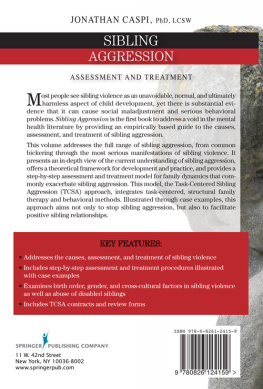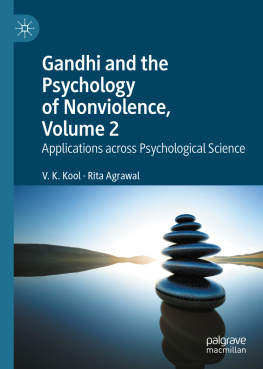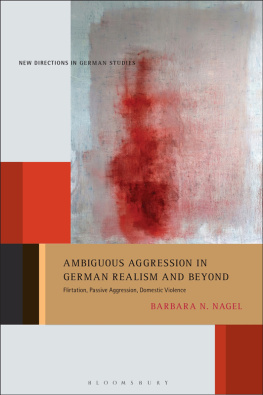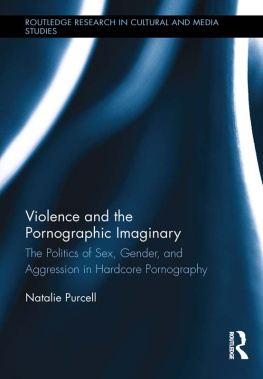PSYCHOLOGY OF NONVIOLENCE AND AGGRESSION
Psychology of
Nonviolence and
Aggression

V.K. Kool


V.K. Kool 2008
All rights reserved. No reproduction, copy or transmission of this publication may be made without written permission.
No paragraph of this publication may be reproduced, copied or transmitted save with written permission or in accordance with the provisions of the Copyright, Designs and Patents Act 1988, or under the terms of any licence permitting limited copying issued by the Copyright Licensing Agency, 90 Tottenham Court Road, London W1T 4LP.
Any person who does any unauthorized act in relation to this publication may be liable to criminal prosecution and civil claims for damages.
The author has asserted his right to be identified
as the author of this work in accordance with the Copyright,
Designs and Patents Act 1988.
First published 2008 by
PALGRAVE MACMILLAN
Houndmills, Basingstoke, Hampshire RG21 6XS and
175 Fifth Avenue, New York, N.Y. 10010
Companies and representatives throughout the world
PALGRAVE MACMILLAN is the global academic imprint of the Palgrave Macmillan division of St. Martins Press, LLC and of Palgrave Macmillan Ltd. Macmillan is a registered trademark in the United States, United Kingdom and other countries. Palgrave is a registered trademark in the European Union and other countries.
ISBN-13: 9780230545540 paperback
ISBN-10: 0230545548 paperback
This book is printed on paper suitable for recycling and made from fully managed and sustained forest sources. Logging, pulping and manufacturing processes are expected to conform to the environmental regulations of the country of origin.
A catalogue record for this book is available from the British Library.
A catalog record for this book is available from the Library of Congress.
10 9 8 7 6 5 4 3 2 1
17 16 15 14 13 12 11 10 09 08
Printed in China
Contents

List of Figures, Tables and Boxes

Figures
Tables
Boxes
Preface

A psychological study of nonviolence and peace involves two questions of fundamental significance:
1. Who initiates and constitutes such peace institutions?
2. What is the model for developing an institution of peace?
With regard to the first question, the answer is simple, that is, it is individuals who form the units of a peace institution. Obviously, psychology, as a science focusing on an individuals behavior, has a pivotal role to play in understanding not only the nonviolent behavior of individuals, but also in delineating its optimal level. Just as we cannot foster democracy in a country with members having autocratic beliefs, so also nonviolence will be elusive in a community with a Rambo cult. Unfortunately, the scientific knowledge of the psychology of nonviolence is meager because the unit of the peace institution, the individual, has not been sufficiently studied with reference to his/her nonviolent behavior. Topics such as the measurement of nonviolence, forgiveness, self-control, and others are very recent phenomena in modern psychology. Even the establishment of the Peace Division of the American Psychological Association and its official journal are not even two decades old. In writing this book, I have made an attempt to put together advances made in the field of the psychology of nonviolence, many among them emerging as an antithesis to the studies on violence.
With reference to the second question, concerning the adoption of a model for establishing peace institution(s), the reader can easily make out that this issue is broader, inviting psychologists to collaborate not only with the fellow scientists in other fields but also with the policy makers and community leaders. In this venture, the role of psychologists has been exceptionally limited (please see ). I believe that this state is primarily due to our limited capacity to answer question 1. As the founding father of modern psychology, William James, wrote almost a century ago, war against war is not going to be a holiday party; we would need to glorify how those who provide service to the community, for example, those engaged in the helping professions, could foster nonviolent tendencies in a society. Even a scientifically developed theory offered by Skinner, a forerunner in psychology, suffered when tested by his followers in a new community. Psychologists cannot operate in a vacuum, for a community cannot be built without multiple perspectives, including cultural, political, historical, religious/spiritual and others. In various sections of this book I have attempted to show how the psychology of nonviolence would flourish in an interdisciplinary context.
The legitimacy of the psychology of nonviolence in its present form is well established (Mayton, 2001). Its core concepts, such as cognition, motivation, affective and emotional processes, and personality, have been researched on for quite some time offering insights into the internal states and behavior of individuals who choose to behave nonviolently when offered both violent and nonviolent options. Given this scenario, I have divided the theme of this book into seven chapters: the nature of nonviolence and its measurement, human aggression, cognition, motivation, the nonviolent personality, conflict resolution, and the future of nonviolence. I also believe that a book on this subject could be written in many other ways, but I opted to confine this volume to the mainstream psychological framework consisting of cognition and motivation.
Unlike most other books that focus on either aggression or nonviolence, in writing this book I have focused on both components of human nature. In the Letters to the Editor column of the Time magazine (October 9, 2006), Daren Kourajan, commenting on the 99 percent similarity of genomes of apes and humans and How we became human, wrote, Lets not forget that the slim 1% difference between humans and chimps that gave us Mozart, Einstein and Socrates is also responsible for social killers, totalitarian despots and greasypalmed politicians.
For their survival, genes may be described as the most selfish of all things ever created by nature, for they know how to survive. In doing so, genes favor the survival of our own children, but increase the cost for those of others by depriving them of the necessary resources or through killing. Knowing that all such processes constitute the holistic functioning of the human being, it is worth examining two contrasting and important characteristics of human existence in this book: Nonviolence and aggression.
The tendencies of nonviolence and violence have coexisted in us, albeit in varying proportions, throughout the course of human history. However, there is at least one important difference between the two. Unlike war, peace as an institution is not an old enterprise (Schwebel, 2005). The contribution of psychology in the study of peace institution is no less significant than any other discipline.
Next page











